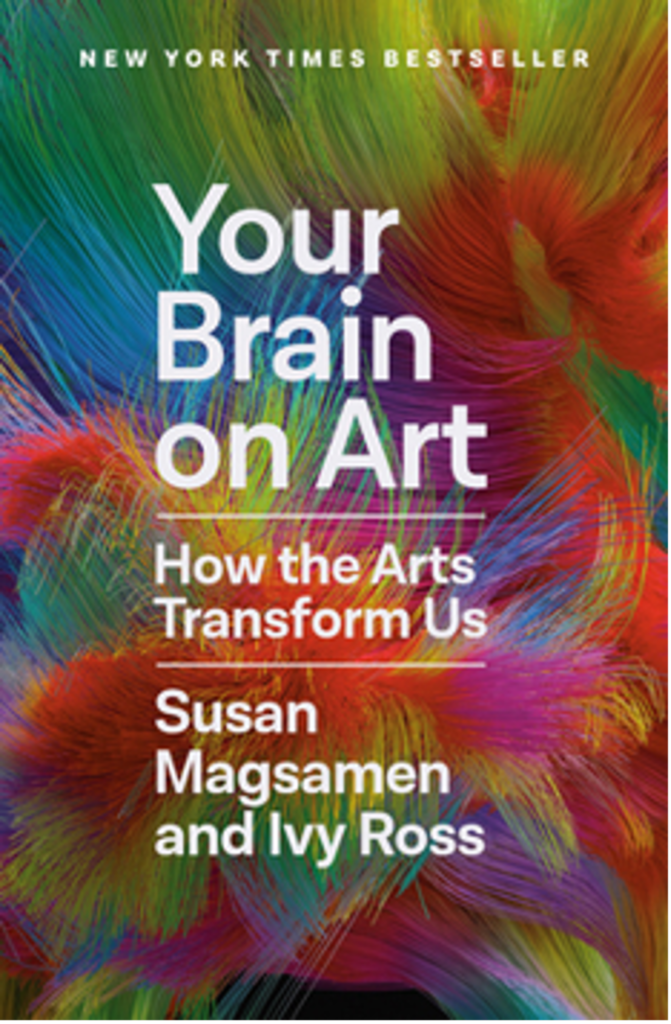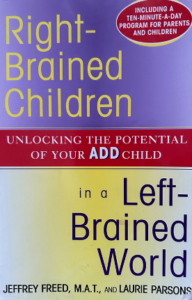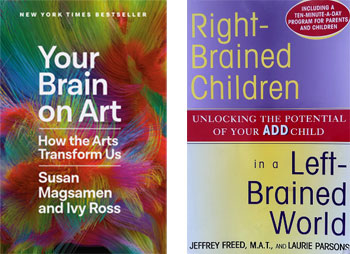School has been in session for a few weeks. You are getting to know your students, their strengths, their weaknesses, and their idiosyncrasies. The school year stretches ahead, full of plans, hopes, and challenges. No doubt you are discovering your students’ diverse needs as learners and wondering how best to support them. Here’s some food for thought as you consider your existing toolbox.

We now have evidence!
Your Brain on Art shares compelling, groundbreaking research conducted by neuroscientists that confirms that when people engage in the art (just 20 minutes a day), it reduces the stress hormone cortisol, increases the ability to concentrate, and actually builds new neural pathways within the brain. Neuroscientists now have evidence that engaging in art, and The Arts in general, can improve cognitive, social, and behavioral outcomes.
Note: Researchers state that you don’t have to be “good at art,” you just have to do it. These findings have profound implications for teachers and students, and especially for teachers working with students who have cognitive or behavioral challenges.
While the idea of creating new neural pathways in the brain sounds intriguing, I have witnessed this phenomenon firsthand.

A personal story
Meet Jay, an elderly family friend. Toward the end of Jay’s life, she lost her ability to speak. She could only mumble garbled sounds. That was terribly frustrating for her and those around her. It was impossible to understand what Jay was trying to say.
One day, I remembered that Jay and my mother used to love to draw and paint together when they were teens. During one visit, I brought a box of Prang watercolors, a paint brush, and some paper. Jay’s eyes lit up and a big grin spread across her face. She grabbed the paint brush and immediately began to paint.
Jay spent about 15 minutes applying paint to the paper. She created a small abstract design, nothing particularly noteworthy. But while she painted, her entire being seemed to relax. Her frustration melted away. What was even more remarkable was that after Jay put down her paint brush, she spoke in complete, fully articulated sentences.
When Your Brain on Art talks about how engaging in art can build new neural pathways in the brain, I have witnessed that. It can be quite profound.

What about students with attention issues?
Right-Brained Children in a Left-Brained World offers an interesting perspective on the challenges and strengths of students with attention issues. Freed, an ADD and ADHD specialist, is often called into a school when school staff have not been able to help a particular student. He notes that in every tough case he has ever worked with, the student with severe attention issues turned out to be a highly visual learner. Freed claims that those highly visual students need visual tools to capture their attention and engage their minds. When these kids are given the visual tools they need, they perform remarkably well.
Time and again
This resonates with my experience. I can’t tell you how many times I have been in a classroom when the teacher has pulled me aside to point out student who is busily writing to an image he or she created. In a whisper, the teacher shares her amazement at the full engagement of that particular student. She goes on to tell me of her yearlong struggle to engage that student, never mind get the student to write something. This happens time and again.
David, a second-grader, was one of my early success stories (1992). He was rarely in his seat. When he was in his chair, he was fiddling with little pieces of paper inside his desk or doodling on his assigned work sheet. One day, David confided in me, “I hate to write. The words fly out of my head before I can get them down on paper.” But David did become fully engaged in the Image-Making collage story-making process. His teacher pulled me aside to comment on this extraordinary change in behavior. On the back of David’s published Image-Making book he wrote, “Writing used to be hard for me, but now it’s easy. All I have to do is look at each picture and describe some things I see. I listen to my words to see if they match with my story and they always do. Now writing is my favorite part of school.”
An alternative approach
If you have students who struggle with attention issues or those who are dealing with unusual amounts of stress, or who exhibit other worrisome signs, it might be worth offering them (and the rest of your class) that 20 minutes of art-making to see what happens. If you try it within the context of Picturing Writing, you may be surprised at the academic strides your diverse learners make because Picturing Writing is not just an isolated art experience.
Picturing Writing offers a highly scaffolded, multimodal, evidence-based approach to teaching writing and fostering reading that engages a wide range of learners. Not only are students receiving the recommended “20 minutes of art” that serves to reduce cortisol levels and heighten their concentration, but they are also drawn into a structured, rich literary experience.
In my next blog, I will explain the power of transmediation and how teachers can harness this incredible tool in their classroom. In the meantime, feel free to check out our independent research findings at https://picturingwriting.org/effectiveness/.
